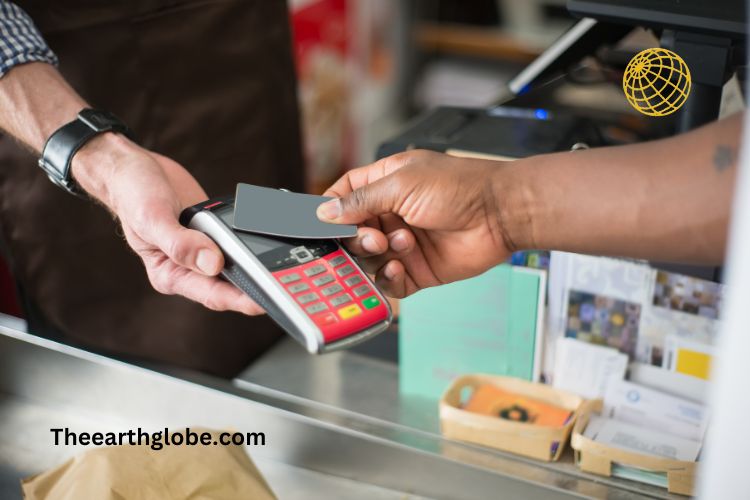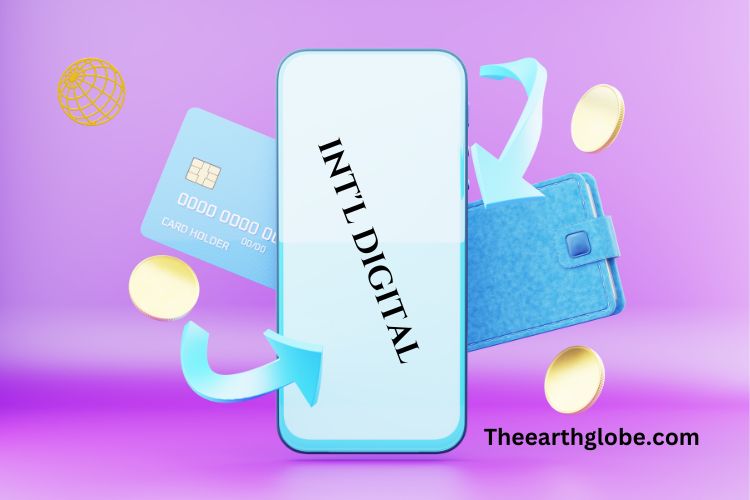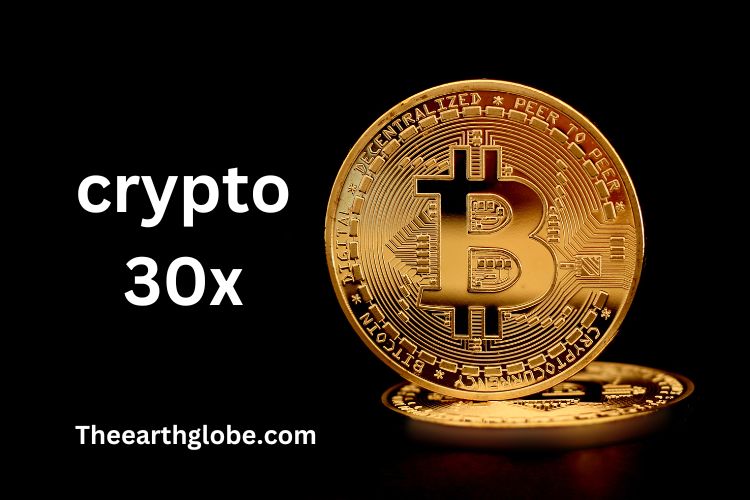Int’l Digital: A Guide to International Digital Transactions
In a world where technology and digital advancements are accelerating, the concept of Int’l Digital has become an integral part of our daily lives. This term encompasses all digital transactions that cross international borders, whether it involves purchasing digital goods, subscribing to services, or any form of digital financial interaction. As global connectivity grows, understanding Int’l Digital becomes crucial for both consumers and businesses. This article will cover everything from what Int’l Digital is, the associated fees, benefits, and practical tips on managing these charges.
What is Int’l Digital?
Int’l Digital, short for International Digital, refers to any transaction that involves digital services or products from a foreign entity. This can include purchasing e-books, software, online courses, or subscribing to services like music and video streaming platforms. As more businesses expand globally, digital transactions across borders have become more common. Understanding the intricacies of these transactions is essential for avoiding unexpected charges and managing finances effectively.
For instance, when you purchase a digital product or service from a company based in another country, your bank may charge you a fee known as an “Int’l Digital Charge.” This fee typically covers the cost of currency conversion and international transaction processing.

The Importance of Int’l Digital in Modern Commerce
Int’l Digital is vital for modern commerce as it allows businesses to operate globally and offers consumers access to a diverse range of digital products and services. Key benefits include:
- Global Reach: Companies can sell to customers worldwide, expanding market reach and boosting revenue.
- Convenience: Consumers enjoy access to a broader selection of products and services, often unavailable locally.
- Economic Impact: It drives economic growth by enabling international trade and creating business opportunities.
- Innovation: Competition on a global scale fosters innovation and the development of new products.
- Improved Customer Experience: Businesses can provide tailored, localized experiences, enhancing customer satisfaction.
Example: When you buy a monthly subscription for a fitness app developed in another country, the transaction is processed internationally, and you might see an “Int’l Digital Charge” on your statement.
Types of Int’l Digital Transactions
International digital transactions can occur in various forms, each with its specific characteristics and charges. Here are some common types:
- Digital Goods Purchases: These include buying software, e-books, online courses, or any other digital product from a foreign seller.
- Subscription Services: Many people subscribe to international services such as Netflix, Spotify, or online news portals. These subscriptions often come with a monthly or annual charge that might include an Int’l Digital Fee.
- In-App Purchases: Mobile apps often offer additional content or features that can be purchased within the app. If the app developer is based overseas, these transactions will be categorized as international digital purchases.
- Online Streaming: Subscribing to streaming services that offer movies, music, or TV shows from other countries can incur international digital fees.
Post You Might Like: Hum Compben E Mer
Why Do Int’l Digital Charges Occur?
Int’l digital charges occur due to the costs associated with processing international transactions. These charges typically appear when you buy digital goods or services from foreign companies. Key reasons include:
- Currency Conversion Fees: Fees for converting foreign currency into your local currency.
- Cross-Border Transaction Fees: Banks charge for processing payments between countries.
- Service Provider Costs: International companies may pass on their operational costs as additional fees.
- Regulatory Compliance: Fees to cover the cost of adhering to international financial regulations.
- Bank Processing Fees: Additional costs due to the complexity and risk of handling cross-border payments.
Understanding these charges helps you manage expenses when dealing with international transactions.
Managing Int’l Digital Charges Effectively
While Int’l Digital Charges are often unavoidable, there are strategies you can use to manage and even reduce them:
- Choose a Card with No Foreign Transaction Fees: Some credit cards do not charge for international transactions, making them ideal for frequent online shoppers who buy from international vendors.
- Pay in Local Currency: If given the option, pay in your local currency rather than the foreign currency to avoid conversion fees. This can sometimes reduce the overall cost of the transaction.
- Use Digital Wallets: Digital wallets like PayPal or Google Pay can help manage international transactions more efficiently, sometimes bypassing additional bank fees.
- Monitor Your Statements: Regularly check your bank statements for unfamiliar charges. If you notice an unexpected Int’l Digital Charge, contact your bank for clarification.

Benefits of Int’l Digital Transactions
Despite the occasional fees, there are several benefits to engaging in Int’l Digital Transactions:
- Access to Global Markets: International digital transactions enable consumers to purchase products and services that may not be available locally. This includes unique software, global streaming services, and educational resources.
- Competitive Pricing: Sometimes, digital products and services may be cheaper in other countries due to currency exchange rates or different pricing strategies.
- Diverse Content: Access to a broader range of digital content, from international streaming platforms to specialized software and courses, enriches the user experience.
Potential Downsides of Int’l Digital Transactions
While the benefits are significant, there are also challenges associated with Int’l Digital Transactions:
- Additional Fees: Besides Int’l Digital Charges, there may be additional fees such as customs duties for physical goods or VAT for digital products in some regions.
- Currency Conversion Costs: Currency exchange rates fluctuate, which can sometimes lead to higher costs than initially expected.
- Dispute Resolution: Resolving disputes with international vendors can be more complex and time-consuming compared to dealing with local businesses.
People Also Read: Nwedi Payments
Avoiding Unexpected Int’l Digital Charges
To avoid surprise fees, consider the following strategies:
- Cancel Unused Subscriptions: Many people forget to cancel subscriptions they no longer use, leading to unexpected charges. Regularly review your subscriptions and cancel those you don’t need.
- Opt for Local Alternatives: If a similar service or product is available locally, choose it over international options to avoid extra fees.
- Use a VPN for Local Pricing: Some services offer different pricing based on location. A VPN can sometimes help access local pricing, but be sure to check the service’s terms to avoid violating any policies.
Details of Int’l Digital Charges
International digital transactions have surged by about 20% recently, reflecting the growing trend of online shopping and global subscriptions. As digital markets expand, you may see “Int’l Digital Charges” on your bank statements more frequently. Understanding these charges is essential for tracking expenses and avoiding confusion. Here’s how they typically appear:
- Company Name and Description: Displays the merchant’s name and a brief description, such as “XYZ Int’l-DIGITAL – subscription.”
- Amount and Currency: Shows the transaction amount converted to your local currency, and sometimes the original foreign currency amount.
- Transaction Date: This may be a few days after the actual purchase date due to processing time.
- Contact Information: Includes customer service details if you need assistance or clarification.
Common Examples of Int’l Digital Charges
- Online Purchases: Buying digital products like e-books or software from international platforms.
- Apps and Games: Purchasing apps or in-game items from global app stores.
- Streaming Services: Subscribing to international streaming platforms for movies, music, or TV shows.
Verifying these details ensures all charges are accurate and expected, helping you “manage your finances” more effectively.
Understanding Your Bank Statement: Decoding Int’l Digital Charges
When you see an Int’l Digital Charge on your bank statement, it’s essential to understand what it means. Here are the typical components of such a charge:
- Company’s Name and Description: This shows the merchant’s name and a brief description of the service or product.
- Amount and Currency: The charge amount, often in your local currency, may also show the original foreign currency amount.
- Transaction Date: This is the date when the transaction was processed, which may differ from the purchase date.
- Contact Information: Some charges include contact details for customer service, helpful if you need to dispute the charge.
How to Dispute an Int’l Digital Charge
If you find an Int’l Digital Charge that you don’t recognize, you can dispute it. Here’s how:
- Verify the Charge: Check your email and transaction history to confirm if the charge is legitimate.
- Contact the Merchant: Reach out to the company listed on your statement to inquire about the charge and request a refund if it’s unauthorized or incorrect.
- Contact Your Bank: If the charge is fraudulent or remains unresolved, report it to your bank or credit card issuer. They can help you file a dispute and potentially reverse the charge.
- Submit a Dispute Form: Some banks require a formal dispute form to be filled out. Follow your bank’s instructions carefully to ensure your dispute is processed.
- Monitor the Resolution: Keep track of your case and any communication from your bank or the merchant until the issue is resolved.

The Future of Int’l Digital Transactions
The landscape of international digital transactions is set to transform significantly in the coming years. Key developments include:
- Increased Use of Cryptocurrencies: Blockchain technology and cryptocurrencies are likely to become mainstream, offering faster, more secure, and cost-effective cross-border payments, bypassing traditional banking systems.
- Enhanced Security Protocols: Advanced security measures such as AI-driven fraud detection and biometric authentication will be crucial in safeguarding international digital transactions.
- Growth of Digital Wallets: The adoption of digital wallets and mobile payment platforms like PayPal and Apple Pay will simplify global transactions, making them more accessible and user-friendly.
- Regulatory Harmonization: As digital transactions become more common, global regulatory frameworks are expected to align, making cross-border payments smoother and more compliant.
These trends will reshape how businesses and consumers engage in international digital commerce, driving a more integrated and efficient global marketplace.
Read To Know About: CCB Madison Tampa
Conclusion
Navigating the world of international digital transactions can be challenging, but with the right knowledge and strategies, you can manage your finances effectively. Whether you’re purchasing digital goods, subscribing to services, or simply exploring global digital markets, understanding Int’l Digital Charges and how to handle them is crucial. By staying informed and proactive, you can enjoy the benefits of global commerce without falling victim to unexpected fees.
In conclusion, Int’l Digital is an essential aspect of modern digital commerce, enabling consumers and businesses to engage in global markets. By understanding the fees involved, managing subscriptions wisely, and using the right tools, you can make the most of international digital transactions while minimizing costs and maximizing value.
Frequently Asked Questions (FAQs)
What is an Int’l Digital Charge?
An Int’l Digital Charge appears on your bank statement when you buy digital goods or services from a foreign company. It covers fees like currency conversion and transaction costs.
Why do Int’l Digital Charges occur?
These charges occur due to costs like currency conversion, cross-border fees, and compliance with international financial regulations.
How can I avoid Int’l Digital Charges?
To avoid these charges, use cards with no foreign transaction fees, opt for local alternatives, or pay in your local currency.
Are Int’l Digital Charges refundable?
Generally, these charges are non-refundable as they cover transaction costs. However, unauthorized charges can be disputed with your bank.
What types of transactions incur Int’l Digital Charges?
These charges apply to purchasing digital goods, subscribing to online services, or making in-app purchases from international companies.
Can I prevent unexpected Int’l Digital Charges?
Yes, you can prevent them by regularly reviewing and canceling unused subscriptions, setting up bank alerts, and checking terms before purchasing.
What are some common fees associated with Int’l Digital transactions?
Common fees include currency conversion charges, cross-border transaction fees, and service provider costs. These can vary depending on your bank and the service you are using.
How does Int’l Digital benefit consumers?
Consumers gain access to a wide range of global products and services, often at competitive prices, and can explore content not available locally.
Are Int’l Digital Charges the same for all banks?
No, fees vary by bank and card issuer. Some offer lower or no fees for international transactions, so check with your provider.
What should I do if I see an Int’l Digital Charge I don’t recognize?
Verify the transaction with your email and purchase history. If it’s unfamiliar, contact your bank immediately to dispute the charge.







